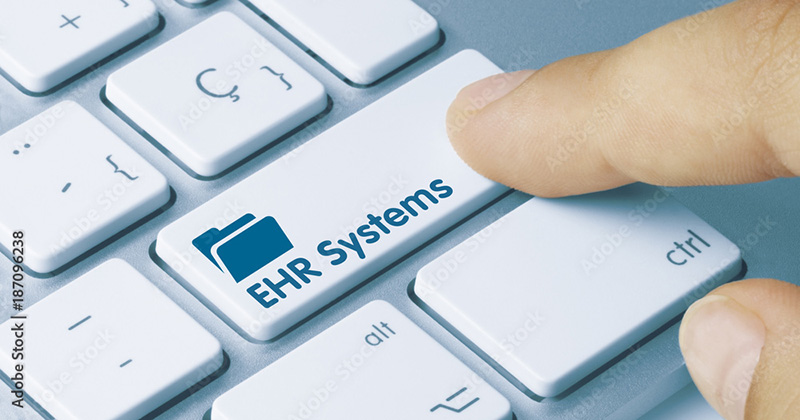Speech-to-TextTechnology in Healthcare - Improving Documentation Efficiency

Physicians are increasingly looking to technology like voice recognition software in healthcare. Healthcare services and technology is one of the fastest-growing sectors in the industry. The healthcare software market is expected to grow by 15% annually through 2027.
These tech tools help streamline medical processes. For instance, speech-to-text optimizes medical notetaking and documentation.
These technologies handle time-consuming tasks. Plus, they automate and improve processes that are prone to error when completed manually. This gives caregivers more time to focus on patients. Also, it eliminates mistakes that could harm healthcare outcomes.
In this article, we will focus on speech-to-text technology. We will explore how it works and how it’s used to streamline clinical documentation. Then, we will explain how to integrate the technology into your EHR platforms. We’ll end with practical tips about how to use speech-to-text in your practice.
Introduction to Speech Recognition Technology
Speech recognition technology in healthcare is sometimes known as medical speech recognition (MSR). The technology uses specific steps to turn spoken words into written text.
First, a microphone captures what the speaker says. The software uses a process called feature extraction. This involves digitizing the incoming audio. The speech-to-text program accounts for factors like volume and tone. It also isolates the spoken words from background noise.
Mathematical models then break the speech down into sounds. Then, the models look for sound and grammatical patterns to help identify words and phrases. The system is then able to define the most likely sequence of words.
Today’s models use vast amounts of data to make these calculations. With all this information, they are extremely accurate. MSR programs include algorithms and data for medical terminology.
In a healthcare setting, physicians would say the information they want to record. The program would record their notes, observations, diagnoses, or treatment plans. Then, its algorithms would convert the speech into text. The text would then get saved or sent to the practice’s EHR system.
RELATED ARTICLE: Drive Revenue and Improve Patient Care with a Fully-Integrated EHR
The Challenge of Clinical Documentation
Independent healthcare practices are familiar with the challenges of clinical documentation. Traditional methods require manual information entry. This process brings a specific set of issues that are difficult to overcome. The following are the most common challenges you’ll encounter:
- Errors. Typing errors are common. Clinical staff may make mistakes when manually entering information. Or the medical records staff may be unable to decipher written notes or records. Doctors see many patients per day.
They may not recall the correct information even if they discover the error.
-
Incomplete documentation. Clinical staff may enter information correctly, but they could miss vital details. Incomplete documentation could make proper care more difficult. Or it could lead to other staff repeating exams or diagnostic tests. Missing data could also complicate billing and insurance coverage.
-
Time loss. Physicians and nurses have to pause after each patient to document the interaction. This limits the amount of time they have to see patients. Also, they may make errors if they hurry to see their next patient. In the long term, manual documentation means doctors can see fewer patients.
-
Lack of standardization. Physicians may use different terms and descriptions. This can complicate medical billing and coding. Coders may have to clarify with the doctor. They also may make errors when entering medical records due to misunderstandings.
-
Staff morale. Staff members may get burned out. The record-keeping requirements and patient load could cause constant stress. Morale could suffer in this hurried environment.
Patients may also become dissatisfied with the documentation process. They have to answer questions, sometimes repeatedly. And they have to wait while staff manually record their answers.
RELATED ARTICLE: Improve Patient Engagement and Office Productivity with a Single Unified Communications Platform
![]()
How Speech-to-Text Improves Clinical Documentation in Healthcare
Documentation is a necessary step in healthcare. And most of the challenges are related to manual documentation. Speech-to-text tools can address some of the issues that arise in traditional medical record-keeping.
Here are the ways voice recognition software in healthcare can improve documentation:
-
Efficiency. Speech-to-text brings time-saving benefits. Doctors can record their diagnoses and notes. In many instances, they may be able to do so while speaking to the patient. This saves the time that would be spent on typing. The doctor can move directly to the next appointment. The time saved could potentially allow them to see more patients per day.
-
Completeness. Speech-to-text can provide a complete record of patient encounters. Doctors can automatically create transcripts during appointments. They will have a full record of their findings. Also, the text can include patient responses. Medical coders can refer to these documents as well. They can find clarifications without having to contact the doctor.
-
Compliance. Accurate documentation is essential for meeting standard of care requirements. Speech-to-text can ensure providers record all relevant information. This can solve the problem of incomplete medical records or notes. A comprehensive record of patient interactions can also prove that you met the standard of care.
-
Less stress. Voice recognition-based documentation can reduce strain in clinics. Caregivers do not have to stop after each patient visit to enter information. They can slow down the pace of their workflow and focus more on each patient. Overall, the streamlined documentation process can lead to a more positive work experience.
-
Fewer errors. Speech-to-text programs are extremely accurate. They can eliminate typos and inaccurate descriptions. But there is a caveat. The software needs knowledge of specialized medical terminology. Standard consumer programs will not work in healthcare. You will need to get a specialized MSR program.
Case studies prove the effectiveness of the programs in clinical settings. There is also research to back up the use of voice recognition software in healthcare. Studies have found that speech-to-text documentation is more complete and saves time.
RELATED ARTICLE: Key Components of an Effective Revenue Cycle Management Compliance Program

Speech-to-Text Integration in EHR Software
Voice recognition software is most effective when integrated with EHR software. This puts the text onto your records platform. It is easily accessible and does not require manual entry or additional uploading.
Quality EHR platforms like DrChrono integrate speech-to-text features into their platforms. Here are the features you might find in these EHR systems:
-
Dictation. Automatic transcripts of notes and records are the most useful function in a clinical setting. On an EHR platform, these notes go directly into the patient’s files. They are accessible by the physician and medical staff. Billing specialists can also use them to support insurance claims.
-
Spoken commands. Doctors can use voice commands to trigger functions. For instance, they can tell the software to format text in a certain way. Providers can also connect it with a specific chart or diagnostic test results. Some programs let you use your voice to navigate through patient files hands-free.
-
Report creation. MSR-powered programs often have report and document templates. Doctors or nurses can use speech-to-text to enter information into the appropriate fields. This saves time that would be spent typing. It also keeps the doctor from having to navigate through the form.
Quality EHR platforms have customizable features. For instance, you can create personalized report templates to fill with voice-to-text. This feature can be important if you work in a specialized area that requires highly customized reports. This level of customization may not be possible with software designed for general practitioners.
RELATED ARTICLE: Electronic Prior Authorization - Why Your Practice Needs This Technology Now
How to Begin Improving Clinical Documentation with Speech-to-Text
You may encounter barriers when adopting voice recognition software in your practice. Studies have found some healthcare pros feel that they can’t correctly control speech-to-text documentation. Or practices simply don’t have the resources to train staff to use the software.
These are roadblocks you can overcome. These tips will help you start adopting speech-to-text tools quickly in your practice:
- Perform a needs assessment. Look at your current documentation processes, assess their efficiency, and obtain feedback from staff. Then, you can define the specific functions you need the new software to perform. Also, consider your areas of specialization. You may need software to handle very specific medical terminology.
- Consider compatibility with current systems. Voice recognition programs are best when integrated with a larger EHR platform. Assess your ability to do this with your current systems. If you can’t add speech-to-text, consider an alternative with integrated tools.
- Seek demos or free trials. Software providers may offer limited-feature versions of their programs or let you try their system for a few days or weeks. These opportunities allow you to test speech-to-text without committing to purchasing a full product or license.
- Involve staff. You can get feedback from staff about the MSR software. Listen to their concerns. When you obtain a demo version, let them participate in testing it. Get input from physicians, nursing staff, and medical records professionals. You can use their feedback and insights to choose a product. You will also know which concerns you must address before a transition.
- Research and contact vendors. Vendor reviews are essential. You can research online to see what other users are saying about speech-to-text software. But you shouldn’t rely on these reviews alone. Reach out to vendors themselves. See how responsive they are and try to gauge how attuned they are to your needs. The best vendors will offer solutions to fit your needs rather than push specific products on you.
Voice recognition software can streamline your documentation processes. It will save you time and reduce errors. But you need to choose specialized medical dictation programs. You must also ensure you can fully integrate the software with your EHR system